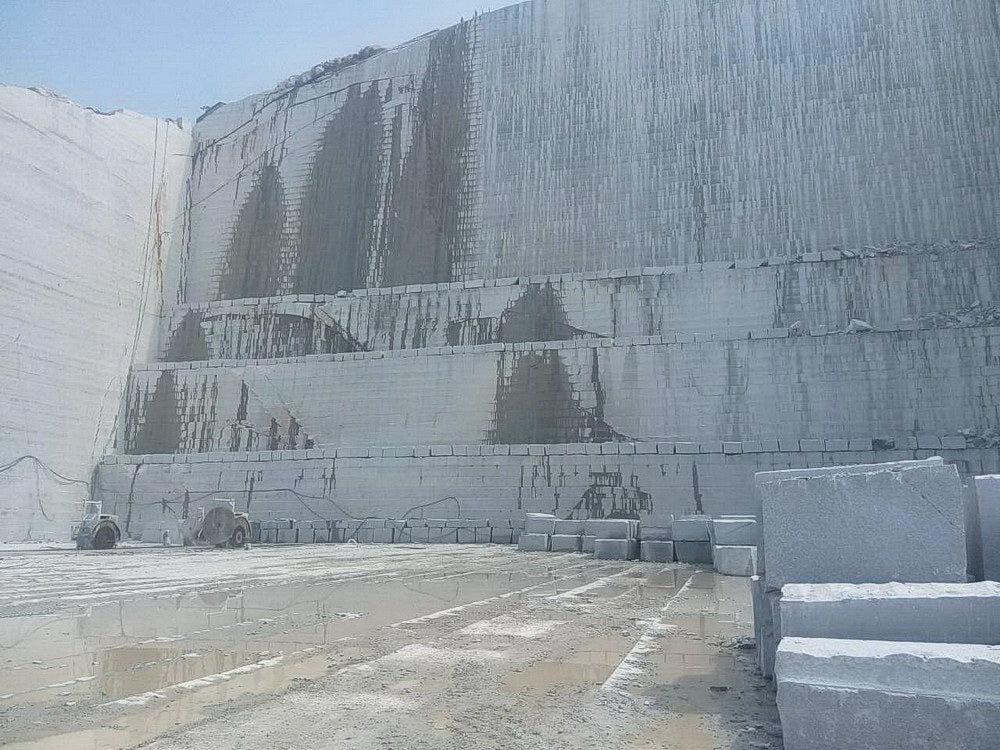Unlocking Natural Prizes: Granite Quarries in South Africa Revealed
Unlocking Natural Prizes: Granite Quarries in South Africa Revealed
Blog Article
Introducing the Mysteries of Granite Quarrying: Where Stamina and Elegance Meet
The globe of granite quarrying is a realm where the raw toughness of nature assembles with human creativity to create frameworks that stand the examination of time with an air of elegance. From the depths of quarries to the meticulous sprucing up in workshops, the procedure of changing granite right into building wonders is an intricate dance of custom and advancement. As we peer into the midsts of this old craft, we begin to reveal the hidden details that shape the really significance of our constructed atmosphere.
The Beginnings of Granite Quarrying
In the record of architectural history, the beginnings of granite quarrying are shrouded in a tapestry of ancient workmanship and geological wonders. Dating back to ancient Egypt and Mesopotamia, the extraction of granite from quarries noted the beginning of a journey that would ultimately result in the development of several of the world's most famous frameworks.
Granite quarrying's origins can be mapped to the knowledgeable artisans who identified the rock's longevity and aesthetic appeal. With a combination of primitive devices and large determination, these very early quarry workers discovered granite blocks that would certainly come to be the foundation of human beings.
As human beings advanced, so did the techniques of quarrying granite. The Romans, renowned for their design prowess, developed innovative techniques for drawing out granite to create monuments, temples, and roadways that stood the test of time.
The tradition of these old quarrying techniques remains to shape modern-day architecture, with granite staying an icon of strength and sophistication in building jobs around the globe. (granite quarries in south africa)
Tools of the Quarrying Profession
The development of granite quarrying strategies from old people to modern times highlights the critical role played by the tools of the quarrying sell shaping the sector's techniques. In ancient times, quarrying tools were primary, typically consisting of blades, hammers, and wedges made from materials like bronze or iron. These tools called for significant manpower and time to remove granite obstructs from quarries.

Additionally, the introduction of pneumatic tools and high-powered equipment has actually substantially reduced the physical labor called for in quarrying procedures, boosting worker safety and security and productivity. As the quarrying sector proceeds to introduce, the tools of the profession remain at the forefront of driving progress and forming the future of granite removal.
Removing Blocks of Granite
Using accuracy machinery and advanced techniques, the removal of granite blocks from quarries has actually come to be a sophisticated procedure in the modern-day quarrying market. The first action entails determining the location and size of the granite down payment to identify the most efficient extraction method. Once a suitable site is selected, the removal process starts with the drilling of openings for the placement of nitroglycerins. Managed blowing up methods are after that employed to disintegrate the granite into manageable areas.

Polishing and Ending Up Methods
To attain a remarkable surface on granite blocks, proficient artisans use a series of precise polishing and ending up strategies. After the initial removal and forming processes, the granite obstructs undergo an extensive polishing phase to boost their natural appeal and resilience. One usual approach used in brightening granite is ruby abrasion, where commercial rubies are used to grind and polish the stone to a smooth coating. This process not only produces a lustrous surface but additionally makes sure uniformity in color and appearance throughout the granite block.
In enhancement to polishing, ending up strategies are put on further improve the granite's appearance. These strategies may include flaming, sharpening, or brushing, each offering helpful resources one-of-a-kind structures and surfaces to suit various visual preferences. Flaming, as an example, includes exposing the granite surface area to heats to create a rough, textured coating, suitable for exterior applications where slip-resistance is vital. Developing, on the other hand, offers a matte coating that is smooth to the touch, perfect for indoor counter tops and floor covering. By thoroughly choosing and applying these polishing and finishing methods, artisans can transform raw granite blocks into splendid items that showcase both toughness and style.

Ecological Impact and Sustainability
With the growing emphasis on ecological consciousness in the industry, granite quarrying methods are progressively inspected for their effect on all-natural resources and long-lasting sustainability. Quarrying for granite can have significant environmental implications. The removal procedure commonly includes making use of heavy equipment, nitroglycerins, and large amounts of water, resulting in habitat destruction, soil erosion, and water contamination. Furthermore, the transport of granite from quarries to processing centers generates carbon exhausts, additionally adding to ecological deterioration. granite quarries in south africa.
To minimize these effects and guarantee sustainability in granite quarrying, sector stakeholders are embracing numerous measures. Executing innovative modern technologies to reduce power intake and water usage, redeeming quarried land for ecological reconstruction, and advertising liable sourcing methods are some methods being used. In addition, certifications such as the Woodland Stewardship Council (FSC) and the Management in Power and Environmental Layout (LEED) assistance consumers recognize eco-friendly granite products.
Final Thought
In conclusion, granite quarrying is a process that requires specialized tools and techniques to remove blocks of granite and polish them to a high level of finish. While the ecological influence of quarrying can be considerable, initiatives are being made to enhance sustainability practices in the market. Generally, granite quarrying is a fragile equilibrium in between harnessing the strength and style of this natural my website stone while lessening its impact on the atmosphere.
Report this page